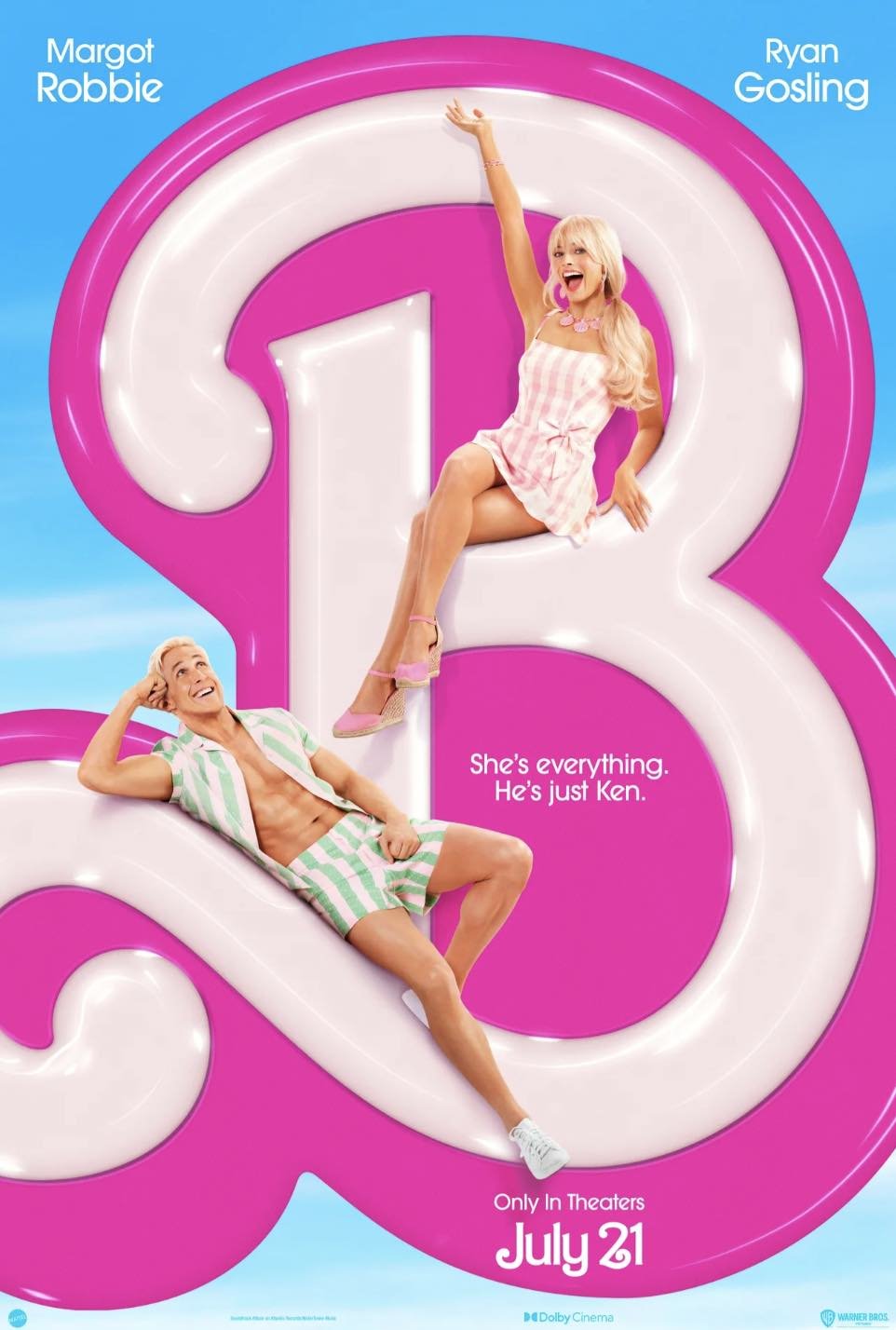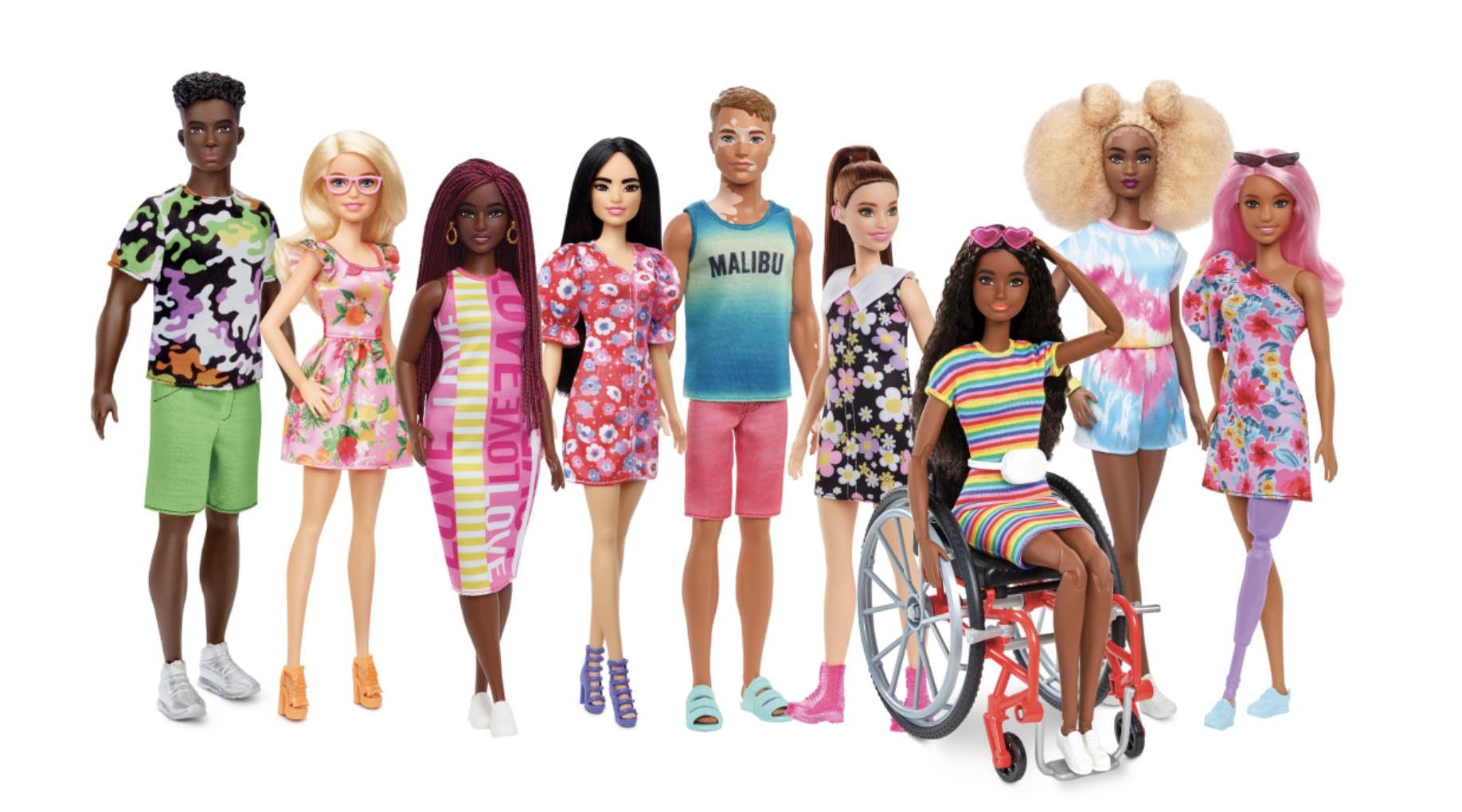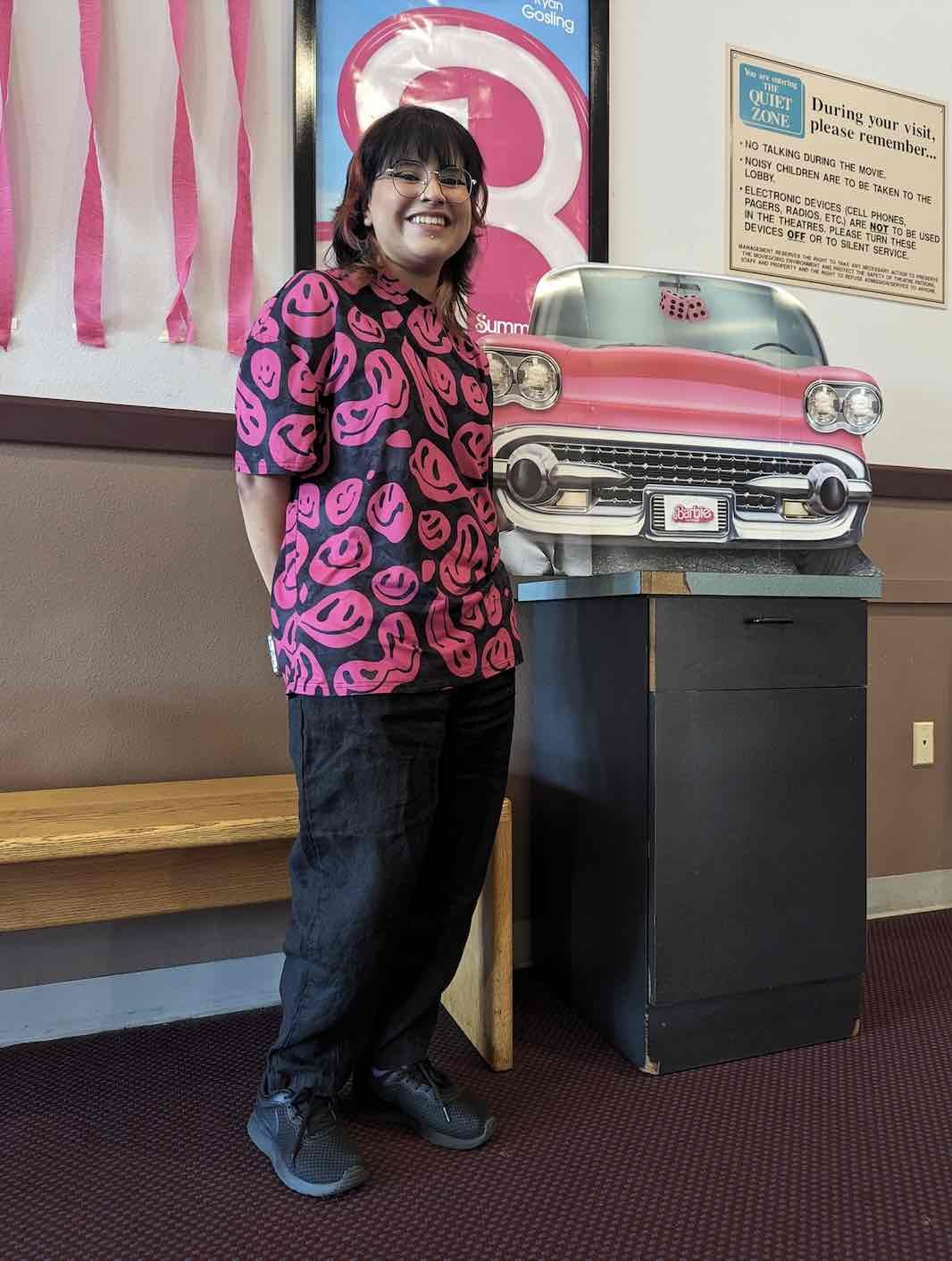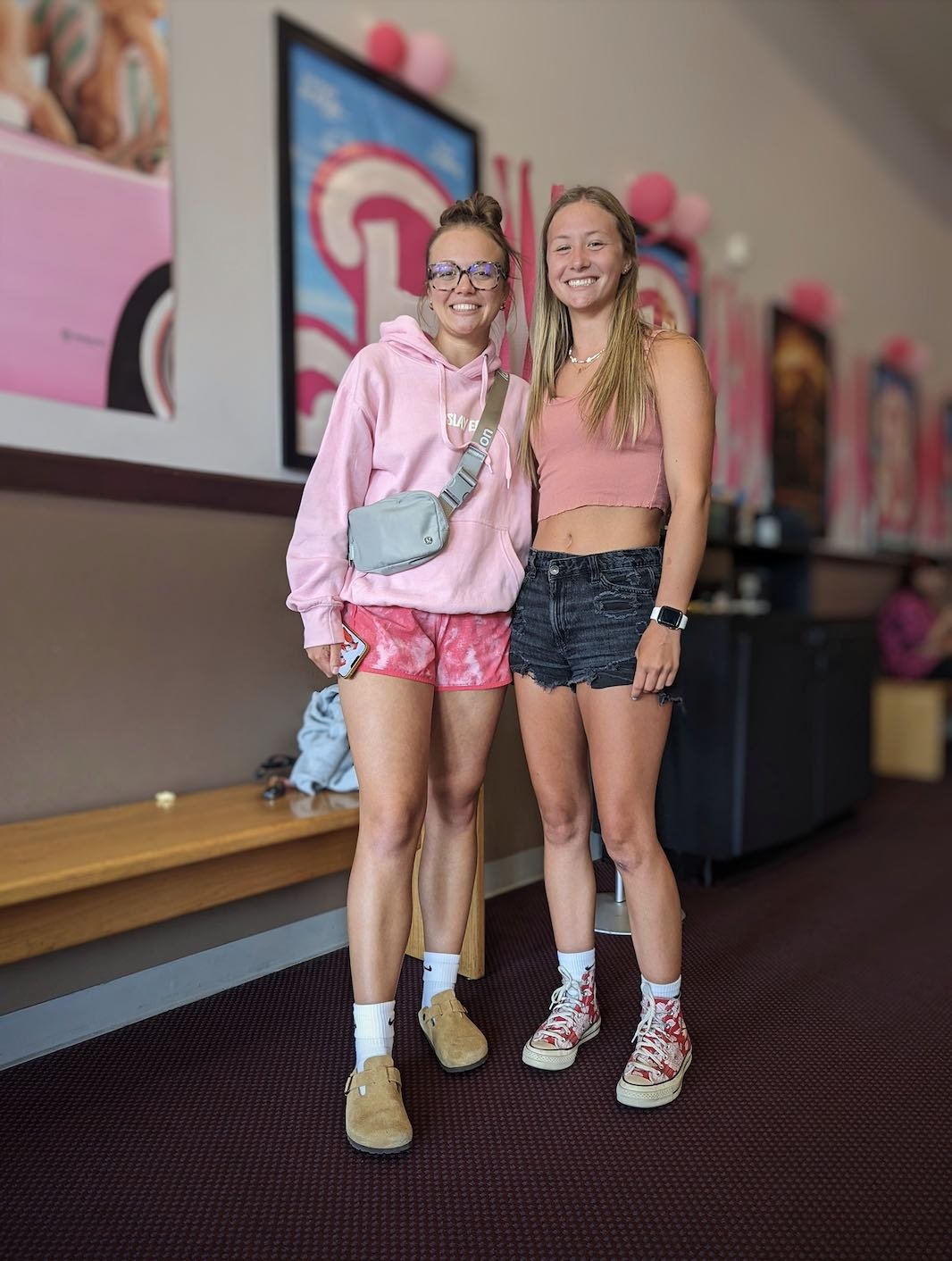Barbie Movie Review: The Good, The Bad and the Glamorous
Photo Credit: Warner Bros.
By Cole Goodwin
Barbie has quickly become the top grossing movie of the year and for good reason. Love it or hate it, Barbie has struck a nerve worldwide, holding up a mirror to the role patriarchy, feminism, culture, consumerism, and gender roles play in our lives.
Spoilers ahead!
The Good
#1 Women’s Empowerment and rejection of gender roles
The movie does a good job of getting it’s message across about women’s empowerment and the rejection of gender roles.
The opening scene in which little girls joyously destroy their baby dolls in favor of Barbie is triumphant, cathartic, funny, and perhaps a little alarming to any audience members who aren’t familiar with indie feminist movie maker Greta Gerwig’s work. Still the message is clear: Barbie is here to teach little girls they can be anything they want to be, and to reject the idea that motherhood is the sole role that women must play in society.
The theme is repeated throughout the movie and is particularly highlighted in a monologue delivered by Gloria, (America Ferrera), a Mattel employee, who allies herself with Barbie.
#2 Diversity & Inclusivity
Photo Credit: Mattel
The movie does a good job of trying to include both cis and trans women, as well as women and men with different body shapes, skin colors, and physical abilities. While it’s not perfect, (There are a lot of implied heteronormative characters and no explicitly gay characters. And there is also no Native American representation in the movie which feels like a missed opportunity to acknowledge the interconnected structures of colonialism and patriarchy.) it does still attempt to drive home a message of equal opportunity and inclusivity.
#3 No Easy Answers
The movie doesn’t try to be overly didactic and leave the audience with all the answers. Instead it offers catharsis about the catch-22 of being a woman in a culture that sets the gold standard of perfect as being a Virgin Mother, a stay at home mom, a career woman, and the picture of grace, poise, and exceptionalism at all times. It also doesn’t hide the fact that Mattel has made some questionable decisions in the past when making their products or the criticism’s of Barbie that exist in the world. Instead it lays it all on the table and invites audience to draw their own conclusions and imagine their own solutions to patriarchy, gender roles, consumerism, and the complexity of mother daughter relationships.
#4 On-par acting, cinematography, set design, and costuming
Photo Credit: Warner Bros.
In terms of acting, cinematorgaphy, set design and costuming, it doesn’t get much better than this. Margot Robbie and Ryan Gosling both shine in their roles as “stereotypical Barbie” and “stereotypical Ken.”
#5 Weird Barbie
Weird Barbie is a perfect character in every way. And Kate McKinnon was the perfect choice for the role.
Weird Barbie is a doll that’s been played with too hard and walked away from it with marker on her face, and a bad hair cut, plus a tendency to always be in the splits. As a result of these perceived imperfections she is shunned by the other Barbies. And on the surface, her character could be read as nothing more than comic relief clad in highly experimental high fashion or a useful outcast to help us get to the real world, and defeat Ken's brainwashing. But Weird Barbie’s character arc from a cautionary tale to a wise and eccentric mentor goes much deeper than that.
A very Matrix moment. Photo Credit: Warner Bros.
Weird Barbie stands in for every outcast that doesn’t fit into the straight-from-the-box stereotypical Barbie world and her character also makes room for queer, neurodivergent, and other marginalized folx to find a point of connection in Barbieland. She doesn’t fit into the box of stereotypical femininity and therefore becomes a symbol of rejecting norms in favor of unbridled creativity–even if doing so…makes things a little weird.
Her character reminds us of the power of a good come back. Weird Barbie speaks to the ways in which hardship and trauma can make us a little weird and leave us with some scars–but also teach us wisdom, critical thinking skills, and can lead to a more complete and complex understanding of reality.
Best of all Weird Barbie teaches us how to approach imperfection with compassion, AND how to meet hardship with humor, honesty, optimism, and generosity.
The Bad
#1 Pacing
The plot of the movie reads a bit like a child’s rendition of playtime. Sometimes a scene seems to drag on and on and then suddenly pivot without warning. It feels very metta, and is perhaps some comment on the creative process and sitting with discomfort, but I think it gets in the way of the movie feeling evenly paced. And at points it just feels unnecessary.
#2 No happy ending
Alright so this is just totally a personal preference. But I love a good happy ending. I get that the whole point of the end of the movie with Barbie going to the gynecologist is that this is the real world, and it’s supposed to be funny, cautiously optimistic, and maybe a bit unsatisfying in that way that so many indie movies like to be. But since the harsh realities of real life are already so freely available— I think it would have been nice to just have a bit more closure than we got.
#3 Injustice Anywhere is Injustice Everywhere
Photo Credit: Warner Bros.
I think there was a missed opportunity to imagine a world where gender equality truly does exist.
When the Barbie’s take back Barbieland from the Ken’s there is no offer of true equality for Ken’s right off the bat. Instead Ken’s are told they can start at the bottom and work their way up, just like women have to in the real world. Maybe it’s a comment on the slow nature of change, but it still feels like a bit of a twist of the knife.
And while I don’t necessarily like that decision, because I’d love to see things end all wrapped up in a pretty pink bow of true equality, I can still imagine why it had to be that way.
After all, Barbie Land is a fantasy; it is a little girl’s cathartic escape from the real world in which she must live. It is a place that centers on femininity, and a safe space to center and express feminine power, grief, rage, joy, and hope. Barbieland is a world in which a black woman can be President, and Barbie’s don’t have to say thank you when they accept their awards, instead they can say “I worked hard and I deserve this” and everyone around her agrees.
And also…I mean, the Ken’s really did do some pretty bad stuff too, like try to brainwash and indoctrinate all the Barbie’s and take over the government, sooo maybe staring at the bottom could be just deserts in this case.
The Glamorous
Barbie pink is well on it’s way to becoming the color of the year. Fans have flocked to theaters in pink carpet looks dressed in looks inspired by Barbie. Some saying that wearing pink has become a symbol of confidence, feminism, and feminine power. Others simply said that it was all in fun and just added to the excitement and fun of seeing the movie.
Style Gallery: Pink Carpet Looks Seen in The Dalles and Hood River
(click on photos to enlarge)
But whether you dress up to see Barbie or not, it’s impossible to talk about Barbie without talking about fashion. After all, the way you play with Barbie is to dress her up!
Barbie’s clothes help define her role. So, it’s no wonder the fashion does a lot of heavy lifting in the story, from Weird Barbie to Stereotypical Barbie. Throughout the movie Barbie’s outfits, hair, and makeup are an expression of who she is both in the pretend world and in the real world. And as Barbie changes, so does her choice of footwear.
When it comes to style, there is not a single dull moment in this movie, from Ken’s custom printed underwear and hoodies, to Barbie’s Chanel accessories.
The movie also speaks to what makes a Barbie outfit feel Barbie. A Barbie outfit typically has to be perfectly purposeful, and color coordinated, with clean lines, minimal accessories, nostalgic prints, classic patterns, and of course-plenty of pink.
Photo Credit: Warner Bros.
In Barbie Land, Barbie is always dressed appropriately for every occasion, whether she is visiting the beach or attending government meetings. But when she comes to the real world, suddenly, Barbie’s outfits make her appear wildly out of place to those around her, leading to stares, catcalling, and ridicule.
Photo Credit: Warner Bros.
Ken’s style says a lot about his personal journey of discovery throughout the movie too. In the beginning, Ken is more of an accessory than a man of agency. And his outfits are tailored to attract the gaze of the woman he loves.
Photo Credit: Warner Bros.
Photo Credit: Warner Bros.
Photo Credit: Warner Bros.
But when Ken decides to adopt patriarchy as his new guiding light his fashion sense changes dramatically. As he navigates this identity crisis, Ken’s style becomes about taking up space, exuding bravado, projecting power, and violence. As a result Ken swaps his mint and pastel pink beach wear for animal skins, and chains. And his outfits start to read like a mixtape of cowboy, boxer and rapper. The overall look stands in stark visual contrast to the Barbie Land aesthetic, signaling to the audience that patriarchy and Ken himself have no place in Barbie Land.
Photo Credit: Warner Bros.
Photo Credit: Warner Bros.
The last outfits worn by Barbie and Ken in the movie also say a lot about where their characters land by the end of the film.
Ken proudly sports a tie-dye hoodie with the affirmation “I am Kenough” signaling where he is on his journey to self acceptance. Meanwhile Barbie trades in the bright magentas of Barbie Land, for the real world along with a practical nude colored blazer, white top, jeans, ponytail, and pastel pink Birkenstocks.
While fashion is often criticized as consumerism disguised as art. And some may see the whole movie as a giant advertisement for Mattel and Mattel’s brand and designer collaborations. The Barbie movie also asks us to pay closer attention to the fact that what we wear—says something about us and the way we express ourselves. In addition it also asks us to notice the ways in which having agency over what we wear is key to our collective liberation. Something that is especially profound when we consider the role that clothes play in gendered fashion, gender roles, and gender expression.





















